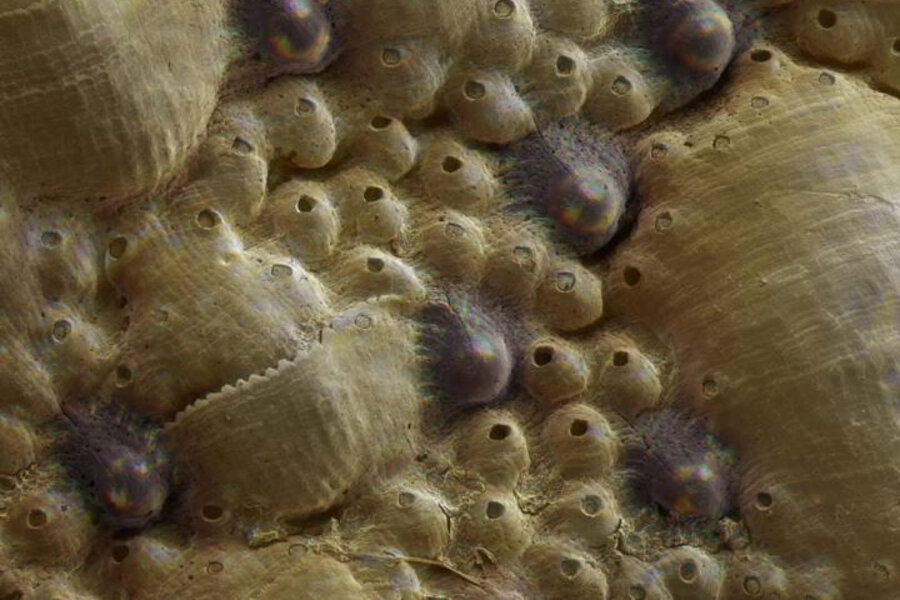Bizarre mollusk's armor covered with rock-lens eyes, say scientists
Loading...
Scientists have discovered that a sea mollusk, called a chiton, isn’t like the other mollusks around: its armor has tiny eyes made from the armor material. Literally, it has lenses made of rock. And the chiton can see out of those eyes.
Chitons have small bodies that are protected by a shell made of several overlapping plates, which are decorated with what appear to be hundreds of tiny beads. Those beads - each less than a tenth of a millimeter across - are eyes.
While researchers have long understood that chitons use their shell to both protect and defend, they did not solve the mystery of the chitons’ eyes until recently.
When Daniel Speiser was a graduate student at the University of California, Santa Barbara, he discovered that those eyes have some unique properties. When he dissected the lenses of the eyes of a West Indian fuzzy chiton, the lenses disappeared when he put them in an acid bath. It turned out that the lenses are made of aragonite, a mineral that dissolves in acid.
Speiser, now a professor at the University of South Carolina, then began working with Ling Li and Matthew Connors, both graduate students at the Massachusetts Institute of Technology (MIT). The team discovered that chitons can, in fact, see out of their rocky eyes -- up to six and a half feet away.
“By studying isolated eyes, we identified how exactly the lens material generates a defined focal point within the chamber which, like a retina, can render images of objects such as predatory fish,” Ling Li, now a postdoctoral researcher at the Harvard School of Engineering and Applied Sciences, said in a Harvard press release.
The research team is interested in what possibilities this discovery might hold for human-led design and innovation in the creation of multifunctional tools and building materials.
"We think this system might provide design lessons for us to learn how nature is able to produce material structures with multiple different functions," Dr. Li told Live Science.
Chitons could “provide a basis for creating self-monitoring materials, such as walls embedded with sensors that would detect cracks,” he added.
“To date, artificial materials that have the ability to perform multiple and often structurally opposite functions are not available. We can not yet rationally design them but studying different multifunctional biomaterials present in nature should ultimately allow us to deduct the key principles for this relatively new area of materials science,” Joanna Aizenberg, Harvard professor of materials science, said in a press release.
“We thus are probably one step closer to construct houses made of a material that is not only mechanically robust, but also furnished with lenses capable of flexibly regulating light and temperature inside and sense environmental conditions,” she added.








